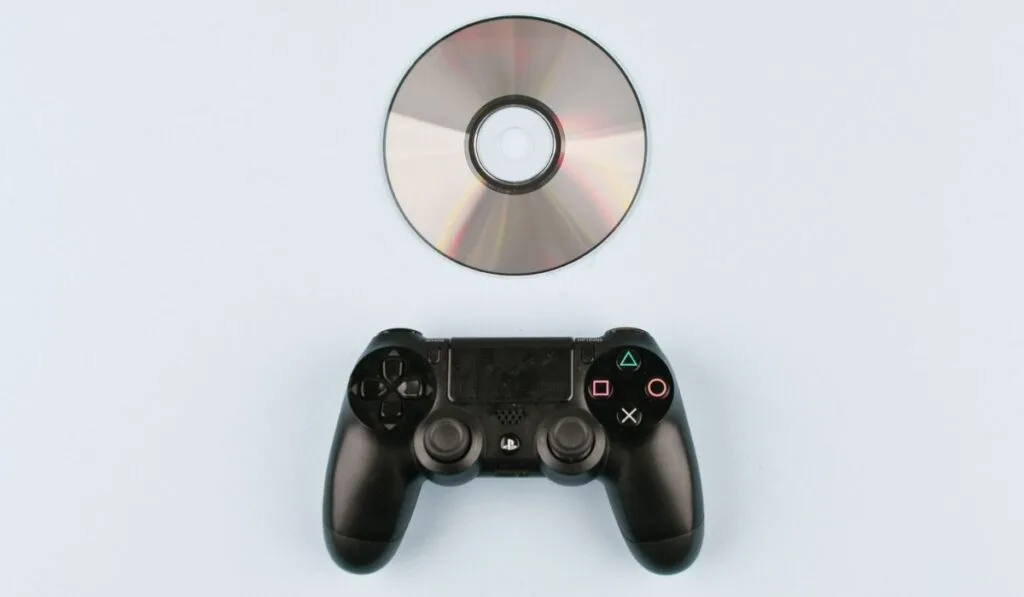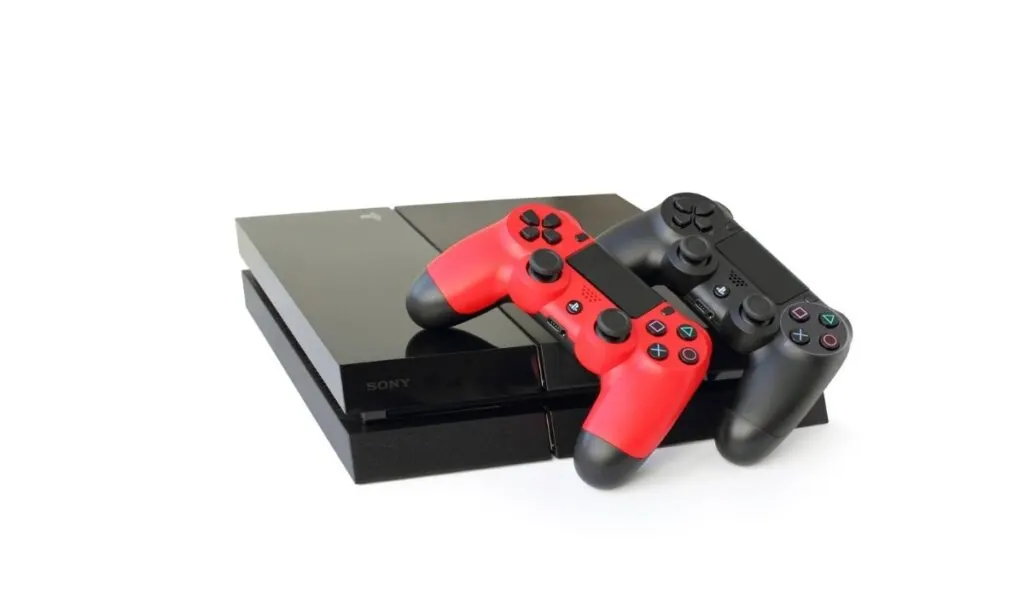The PlayStation 4 is a much-loved console, but it’s got its fair share of issues and problems. Controller connectivity issues are one of the most common frustrations that users across the globe share. Thankfully, there are some easy ways to resolve this issue.
To prevent your PS4 DualShock controller from disconnecting, be sure there are no external Bluetooth devices interfering with the signal. Try to reset and re-sync your controller. If you’re still experiencing problems, you may need to purchase a replacement controller. Sony support is an option too.
Although connection issues can hamper your gaming experience, they generally aren’t cause for a full-blown panic attack. With a bit of troubleshooting and elbow grease, you can quickly resolve the issue. Follow the steps in this article to begin solving your controller problem.
Why Does My PS4 Controller Keep Disconnecting?

Disconnecting controllers can be a very frustrating experience, to say the least. It doesn’t help that there could be a variety of reasons why your PS4 keeps disconnecting, including the following:
- Hardware issues with some of the buttons could result in slow responses and disconnects.
- Obstructions from other objects could be affecting your signal.
- Interference from other Bluetooth devices like WiFi routers can cause connection issues.
- Damaged USB ports can cause problems.
- Outdated drivers and software can also cause your DualShock to disconnect.
How Can I Fix My PS4 Controller if It’s Disconnecting?
Disconnecting and lagging controllers can be a pain. Thankfully, troubleshooting this issue is typically a straightforward process. Here are some ways you can begin to resolve your connectivity problems.
Reset Your PS4 Controller
Manually resetting your controller might just do the trick. Try following these steps:
- Turn your PS4 controller over. You should see four screws.
- You should notice a hole next to the upper right-hand screw; this is where the reset button is located.
- Press and hold the button down for five seconds using a paperclip, toothpick, or something similar.
- You may need to pair and re-sync your controller afterward.
Disconnect and Reconnect the Controller
Now that you’ve reset your controller, you’ll need to hold the PS button and Share button down at the same time to boot it in Bluetooth mode. Afterward, you can try to pair your PS4 controller with your console using the Bluetooth Pairing feature.
Move Any Devices That May Cause Interference
If your PS4 controller keeps disconnecting or lagging, you may need to move other devices that can cause interference. Move devices like your WiFi router, laptop, tablet, smartphone, or any other Bluetooth accessories from the general area.
Even devices such as external PS4 hard drives can cause connectivity issues.
Check Battery Levels
Checking your controller’s battery life may be an obvious first step, but don’t overlook it! Ensure your DualShock is properly charged. Let the controller fully charge overnight or throughout the day to be sure low battery life isn’t the issue.
Use a USB Cable to Connect to Your Console
You can try using a USB cable to connect the controller to your PS4 if you’re using wireless connections. Try connecting the DualShock controller with the USB cable that came with the console.
You can also use a USB cable with a micro-USB controller to see if that solves the issue. You may need to experiment with several compatible cables to troubleshoot accordingly.
Once you find a working cable, restart your console. If this solution resolved your issue, congratulations! If the issue persists, you’ll need to continue the troubleshooting process.
Restart Your PS4 Console
Have you tried turning the console on and off again? This may be an obvious option, but if you haven’t tried it, restart your console. Many users have reported that this solves the problem.
- Turn off your PS4 by pressing and holding the power button for 30 seconds until you hear two beeps.
- Unplug the power cables, HDMI cables, and any other cords.
- Wait five minutes, plug the console back in, and reboot.
Troubleshoot Your PS4
Booting your PS4 in Safe Mode is another way you can resolve connectivity issues. Follow the steps provided below:
- Hold down the Power button until your PS4 turns off.
- Keep holding the Power button down until your PS4 enters Safe Mode. You’ll know you’ve entered Safe Mode after hearing a beep.
- Press the PS button on your controller.
- You’ll see the options Change Resolution, Rebuild Database, and Restore Default Settings.
- Select either Rebuild Database or Restore Default Settings.
- Select Restart.
Rebuild Database won’t delete anything unless there’s a corrupted game file. Restore Default Settings will delete all data not backed up on the Cloud, so use this solution only as a last-ditch effort to fix your PS4.
Update Your Software
Typically, PS4s have automatic downloads enabled. However, you can run software updates manually if the situation calls for it.
- Select Settings from the home menu using your PS4 controller.
- Choose System Software Update.
- Select the option Update Now.
- Follow the prompts provided, choose Next, and wait for the download to complete. You’ll see the license agreement when the download is finished.
- Accept the software update.
- The software update should begin to install. Your PS4 may restart during the update.
What if My Controller Only Disconnects on Steam?
You may only experience connectivity issues when you’re using your DualShock controller through Steam or on the PC. This is a common issue and has been reported by many users. Follow the steps below to begin troubleshooting:
- Open the Steam launcher and go to Settings. From there, click on Controller. Select General Controller Settings.
- Next, click on PlayStation Configuration Support.
- Finally, click on Controller Shutdown Time and choose Never by default. This setting is usually set to 15 minutes, meaning it will disconnect after idling for 15 minutes.
You may need to change a couple more settings If this doesn’t resolve your issue. From there, you can go to Human Interface Devices and select Device Manager. Choose HD Compliant Game Controller and select Disable.
What if I’m Using Remote Play?
The Remote Play feature allows users to stream their PS4 to compatible Bluetooth devices. This means you can play your PlayStation 4 games even if your TV is being used by another person or device.
However, this feature can sometimes cause your DualShock to try and connect to multiple devices at the same time.
Here’s how to disable the Remote Play feature.
- Open up the Settings menu from the PS4 home screen.
- Select Remote Play Connection Settings.
- Make sure the Enable Remote Play checkbox isn’t checked or enabled.
What if All Else Fails?

Your DualShock controller is vital to your gaming experience. Without the controller, you can’t enjoy your console or play the latest games.
Thankfully, if you’ve tried the troubleshooting methods listed above and you’re still experiencing issues, there are a few things you can do.
Borrow a Friend’s Controller
You can always ask a friend to borrow an extra controller if your DualShock is on the fritz. Asking a friend to borrow a controller will also confirm that your DualShock is the issue and not the console itself.
Contact PlayStation
If your PS4 controller still won’t connect, it may be time to contact PlayStation Support. You can visit their site to find other users with similar problems who have resolved their issues. Or, you can contact them directly to speak with a customer support agent.
Furthermore, you may be eligible for a refund or professional maintenance if your PlayStation 4 is still under warranty. To start the process, you can head over to the Fix & Replacement page.
Alternatively, you can contact PlayStation’s Twitter @askPlayStation, or call 1-800-345-7669 for more assistance.
Upgrade to a PS5 Instead
If none of the troubleshooting methods worked and a maintenance repair is out of the question, it may be time to move on to the PlayStation 5 (on Amazon). Let’s compare the two consoles to see if upgrading is really worth the money.
Comparable Price Points
Generally speaking, having your PS4 professionally repaired or serviced is going to run you around $150. If you opt for a completely new PS4 console (on Amazon), you’ll be spending several hundred at least.
The cost of a new PlayStation 5 (on Amazon) varies, but it can top a thousand dollars. If you can afford it, it may be better to purchase the latest console instead of fixing the last generation’s model.
Better Controller
One of the defining features of the PlayStation 5 is the included DualSense Wireless Controller (on Amazon). Some of the main selling points of the controller are the haptic feedback and adaptive trigger features.
The haptic feedback enables real-time rumbling and vibration, resulting in a richer gaming experience. The adaptive trigger features change the force needed to press the triggers down, allowing more immersive gameplay.
In addition, many PC games and ports are supporting and enabling these features. So if you’re tired of controller issues and crave a richer gaming experience, the new PS5 may be your best bet.
Better Specs
It’s no surprise the PlayStation 5 has better specifications, components, and capabilities than its predecessor. To put it plainly, the PS5 has twice the GPU power and RAM, and features 4k compatibility compared to the PS4. Here are the specs broken down a bit further:
PlayStation 4 Slim (on Amazon) Specifications:
- CPU: 8 Jaguar Cores, 1.6GHz
- GPU: 18 CUs at 800MHz, 1.84 TFLOPS
- Memory: 8GB GDDR5
- Internal Storage: 500GB or 1TB HDD
- External Storage: 2.5-inch HDD or USB HDD
- Optical Drive: Blu-ray
- Video Output: 1080p
PlayStation 5 (on Amazon) Specifications:
- CPU: 8-core, 16 thread, up to 3.5Ghz (variable frequency)
- GPU: 36 CUs at 2.23GHz, 10.3 TFLOPs (variable frequency)
- Memory: 16GB GDDR6
- Internal Storage: Custom 825GB SSD
- External Storage: NVMe SSD slot or USB HDD
- Optical Drive: Ultra HD Blu-ray
- Video Output: 4K at 120Hz or 8K
Conclusion
Controller issues can be an incredibly frustrating challenge to deal with. Input lag, connectivity issues, and poor features result in a lower-quality gaming experience. Although there are troubleshooting methods available, you might be better off purchasing Sony’s latest console, the PlayStation 5.
If you can stomach the hefty price point, the console is sure to increase your overall gaming experience by a substantial amount.
